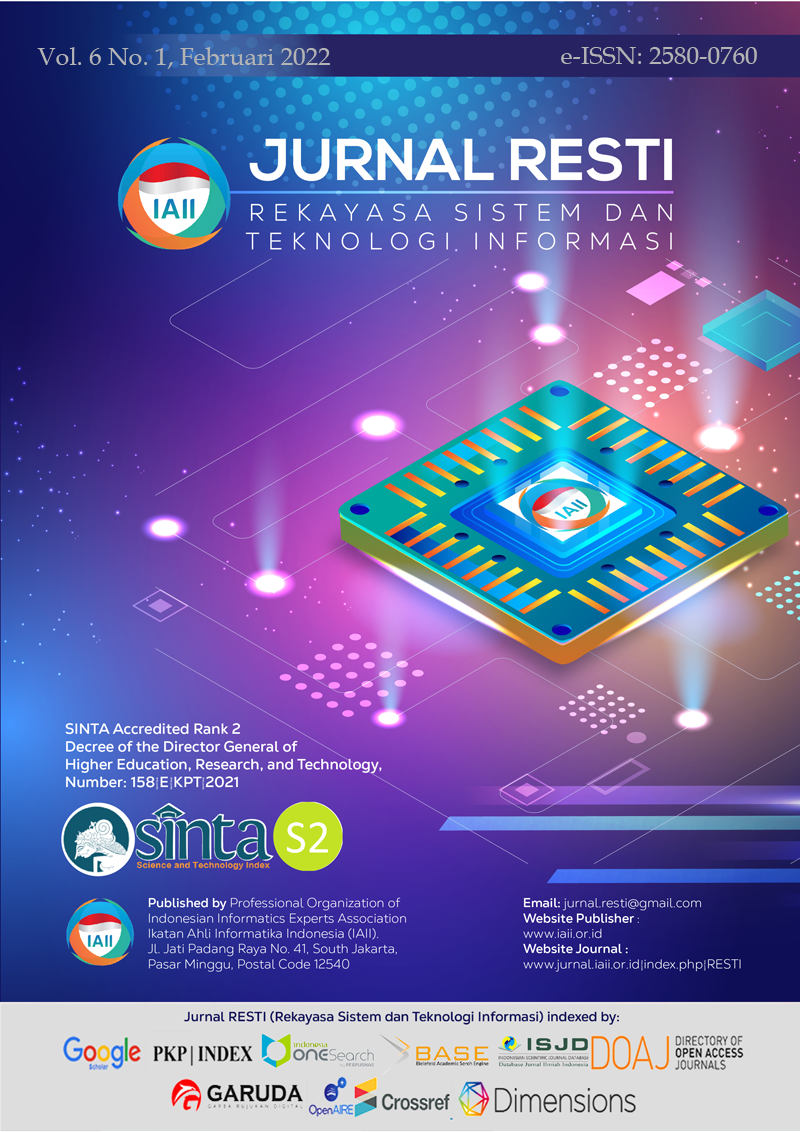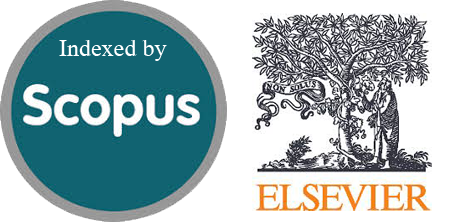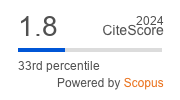Implementation of Ensemble Method in Schizophrenia Identification Based on Microarray Data
Abstract
Schizophrenia is a chronic mental illness that leads the patient to hallucinations and delusions with a prevalence of 0.4% worldwide. The importance early detection of Schizophrenia is tracking the pre-syndrome of Schizophrenia during the active phase, and could reduce psychosis symptomatic. However, the method sometimes cannot detect the symptoms accurately. As an alternative, machine learning can be implemented on microarray data for early detection. This study aimed to implement three ensemble methods, i.e., Random Forest (RF), Adaptive Boosting (AdaBoost), and Extreme Gradient Boosting (XGBoost) to identify Schizophrenia. Hyperparameter tuning was performed to improve the performance of the models. Based on the results, we found that the model 6, which is developed by the XGBoost method, performs better than other models with the value of accuracy and F1-score are 0.87 and 0.87, respectively.
Downloads
References
M. Dong et al., “Quality of Life in Schizophrenia: A Meta-Analysis of Comparative Studies,” Psychiatr Q, vol. 90, no. 3, pp. 519–532, Sep. 2019, doi: 10.1007/s11126-019-09633-4.
N. Ueda, K. Maruo, and T. Sumiyoshi, “Positive symptoms and time perception in schizophrenia: A meta-analysis,” Schizophrenia Research: Cognition, vol. 13, pp. 3–6, Sep. 2018, doi: 10.1016/j.scog.2018.07.002.
J. A. Lieberman, S. A. Small, and R. R. Girgis, “Early Detection and Preventive Intervention in Schizophrenia: From Fantasy to Reality,” AJP, vol. 176, no. 10, pp. 794–810, Oct. 2019, doi: 10.1176/appi.ajp.2019.19080865.
S. Karthik and M. Sudha, “Predicting bipolar disorder and schizophrenia based on non-overlapping genetic phenotypes using deep neural network,” Evol. Intel., vol. 14, no. 2, pp. 619–634, Jun. 2021, doi: 10.1007/s12065-019-00346-y.
J. Parnas and M. Zandersen, “Self and schizophrenia: current status and diagnostic implications,” World Psychiatry, vol. 17, no. 2, pp. 220–221, Jun. 2018, doi: 10.1002/wps.20528.
A. Chatziioannou, “Studying Microarray Gene Expression Data of Schizophrenic Patients for Derivation of a Diagnostic Signature through the Aid of Machine Learning,” BBIJ, vol. 4, no. 5, Sep. 2016, doi: 10.15406/bbij.2016.04.00106.
H. Zhang, Z. Xie, Y. Yang, Y. Zhao, B. Zhang, and J. Fang, “The Correlation-Base-Selection Algorithm for Diagnostic Schizophrenia Based on Blood-Based Gene Expression Signatures,” BioMed Research International, vol. 2017, pp. 1–7, 2017, doi: 10.1155/2017/7860506.
L. Zhu et al., “The machine learning algorithm for the diagnosis of schizophrenia on the basis of gene expression in peripheral blood,” Neuroscience Letters, vol. 745, p. 135596, Feb. 2021, doi: 10.1016/j.neulet.2020.135596.
A. Motwani, G. Bajaj, and S. Mohane, “Predictive Modelling for Credit Risk Detection using Ensemble Method,” ijcse, vol. 6, no. 6, pp. 863–867, Jun. 2018, doi: 10.26438/ijcse/v6i6.863867.
A. Nagpal and V. Singh, “A Feature Selection Algorithm Based on Qualitative Mutual Information for Cancer Microarray Data,” Procedia Computer Science, vol. 132, pp. 244–252, 2018, doi: 10.1016/j.procs.2018.05.195.
H. Nasiri and S. A. Alavi, “A Novel Framework Based on Deep Learning and ANOVA Feature Selection Method for Diagnosis of COVID-19 Cases from Chest X-Ray Images,” Computational Intelligence and Neuroscience, vol. 2022, pp. 1–11, Jan. 2022, doi: 10.1155/2022/4694567.
I. Kurniawan, M. Rosalinda, and N. Ikhsan, “Implementation of ensemble methods on QSAR Study of NS3 inhibitor activity as anti-dengue agent,” SAR and QSAR in Environmental Research, vol. 31, no. 6, pp. 477–492, Jun. 2020, doi: 10.1080/1062936X.2020.1773534.
Z. Xu and Z. Wang, “A Risk Prediction Model for Type 2 Diabetes Based on Weighted Feature Selection of Random Forest and XGBoost Ensemble Classifier,” in 2019 Eleventh International Conference on Advanced Computational Intelligence (ICACI), Guilin, China, Jun. 2019, pp. 278–283. doi: 10.1109/ICACI.2019.8778622.
G. N. Dimitrakopoulos, A. G. Vrahatis, V. Plagianakos, and K. Sgarbas, “Pathway analysis using XGBoost classification in Biomedical Data,” in Proceedings of the 10th Hellenic Conference on Artificial Intelligence, Patras Greece, Jul. 2018, pp. 1–6. doi: 10.1145/3200947.3201029.
C. Wang, C. Deng, and S. Wang, “Imbalance-XGBoost: leveraging weighted and focal losses for binary label-imbalanced classification with XGBoost,” Pattern Recognition Letters, vol. 136, pp. 190–197, Aug. 2020, doi: 10.1016/j.patrec.2020.05.035.
P. Yang, Y. Hwa Yang, B. B. Zhou, and A. Y. Zomaya, “A Review of Ensemble Methods in Bioinformatics,” CBIO, vol. 5, no. 4, pp. 296–308, Dec. 2010, doi: 10.2174/157489310794072508.
Copyright (c) 2022 Jurnal RESTI (Rekayasa Sistem dan Teknologi Informasi)

This work is licensed under a Creative Commons Attribution 4.0 International License.
Copyright in each article belongs to the author
- The author acknowledges that the RESTI Journal (System Engineering and Information Technology) is the first publisher to publish with a license Creative Commons Attribution 4.0 International License.
- Authors can enter writing separately, arrange the non-exclusive distribution of manuscripts that have been published in this journal into other versions (eg sent to the author's institutional repository, publication in a book, etc.), by acknowledging that the manuscript has been published for the first time in the RESTI (Rekayasa Sistem dan Teknologi Informasi) journal ;








